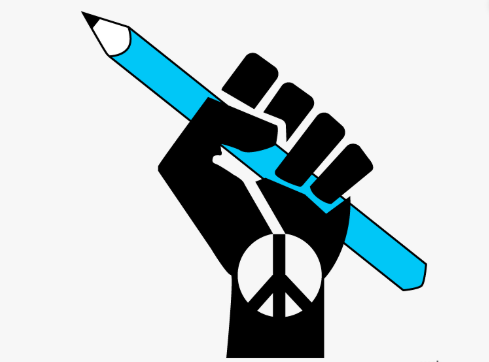The shooting of a reporter in the West Bank is among the numerous killings of media workers worldwide. What international protections exist for journalists, and what can be done to make the world safer for the press?
Sonya Angelica Diehn
13 May 2022
Reporters at work are increasingly the target of violence
To maintain freedom of the press, which is essential for democracy, journalists must be able to safely complete their jobs. Yet media workers are increasingly facing danger and even death, particularly in conflict zones and in some countries around the world.
Shireen Abu Akleh, a veteran correspondent reporting for Al Jazeera, was fatally shot Wednesday while covering an Israeli military raid in the West Bank. Abu Akleh's colleague Ali Samoudi was also shot in the back and wounded during the incident, according to Al Jazeera. It was not immediately clear where the gunfire came from.
Abu Akleh's killing has added to a death toll of as many as 28 media staff killed because of their work this year alone, according to the International Press Institute.
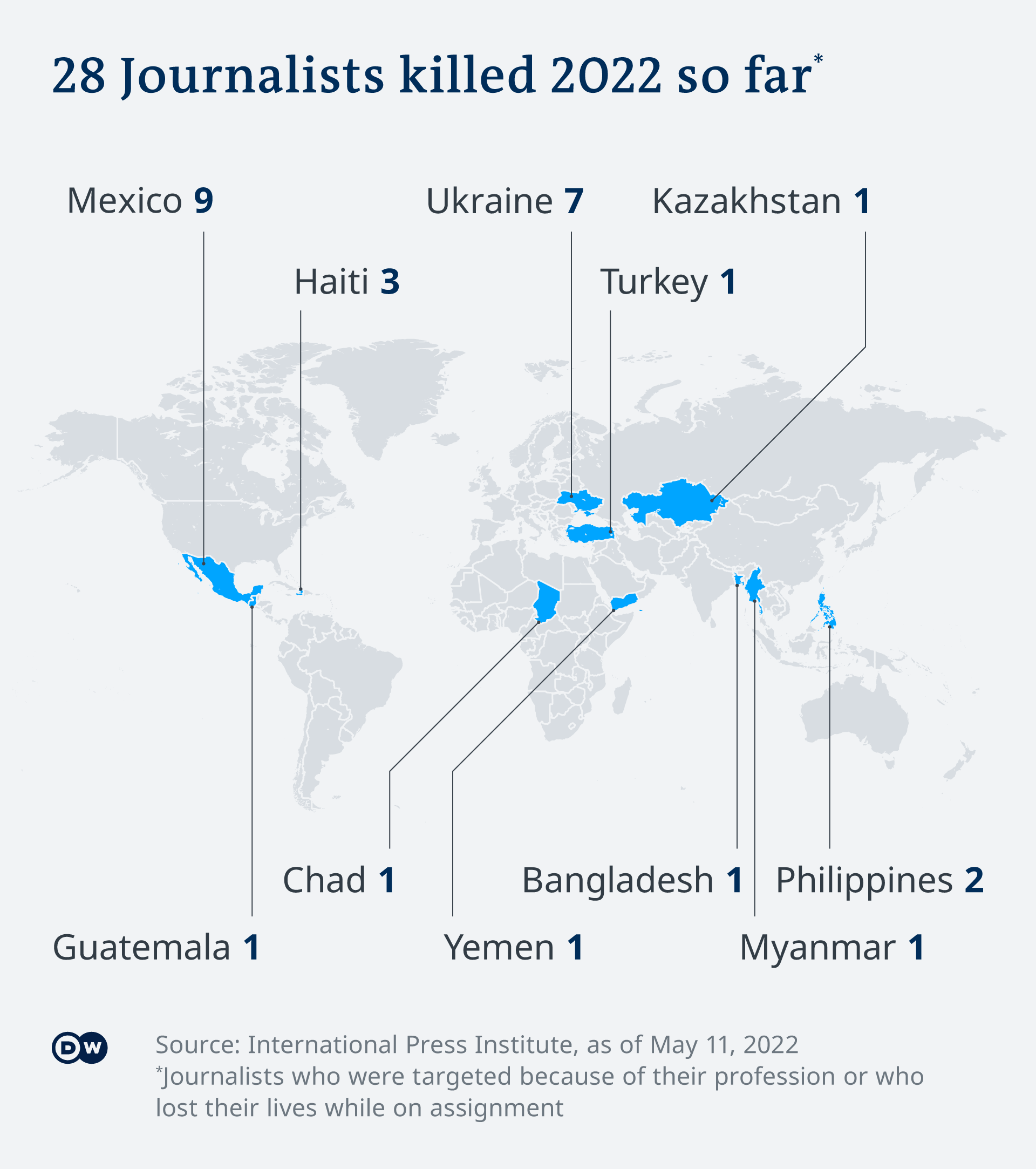
Journalists "are coming under increasing attack around the world, and this includes reporting in conflict zones," confirms Scott Griffen, deputy director of the International Press Institute, a global press freedom organization based in Vienna.
In 2021, the group logged a total of 45 journalists killed.
Since the beginning of this year, the International Press Institute has noted an increase in violent attacks against the press.
WHAT INTERNATIONAL PROTECTIONS EXIST FOR JOURNALISTS?
Human rights laws apply to journalists and are intended to protect them, Griffen explains.
"Journalists, like civilians, are never legitimate targets in a conflict zone, and so this would mean that a deliberate attack on a journalist would be a violation of international law and those responsible would need to be held to account."
Pauline Ades-Mevel, spokesperson for Reporters Without Borders, which advocates for journalists throughout the world, adds: "Reporters Without Borders has condemned the killing of Shireen Abu Akleh this morning because it constitutes a breach of the Geneva Convention, as well as Resolution 2022 of the UN Security Council on the protection of journalists."
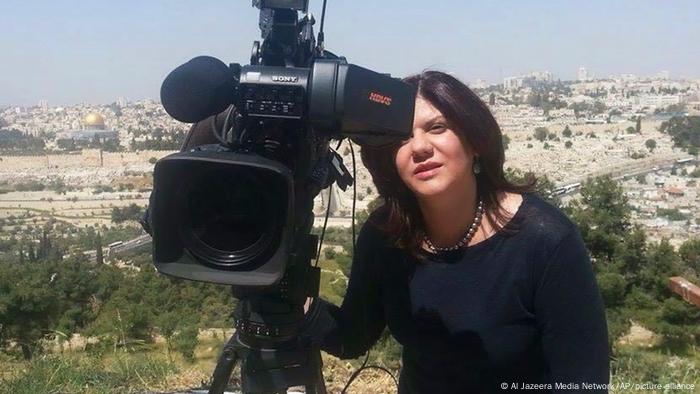
Shireen Abu Akleh was a well-known journalist, having worked at Al Jazeera since 1997
In addition, there is a large number of resolutions by various UN bodies, along with other fundamental protections for press freedom including international treaties such as the International Covenant on Civil and Political Rights, says Griffen.
Whether those perpetrating crimes against journalists, including murder, get prosecuted is another matter altogether.
BREAKING THE CYCLE OF IMPUNITY
The most important thing that can be done in cases targeting media in violent acts is accountability, Griffen says. "It sounds very simple, but it isn't — we know that in at least 90% of cases in which journalists are murdered, those responsible are not held to account."
"The failure to respond quickly to attacks on journalists and to hold those responsible for the initial attacks creates what we call a cycle of violence, a cycle of impunity where those responsible feel that they can act without consequences, and we see it as an open invitation to attack journalists."
Ades-Mevel agrees that ending impunity is crucial to ending the killing of journalists. "If there is no judicial response, the number of killings will continue to grow and grow and grow."
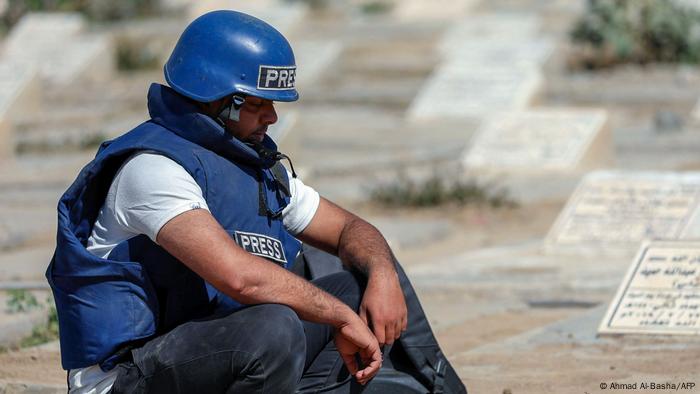
While some reporters are caught in the line of fire in conflict zones by chance or circumstance, others are specifically targeted
Cases may be brought nationally, or even taken to the International Criminal Court, she explains.
When no judicial action is taken, international pressure should be brought to bear, Ades-Mevel says. "International pressure is key in these kinds of cases because it raises awareness throughout the world and forces the state to take responsibility."
But such pressure must be sustained, long-term and meaningful in order to be effective, Griffen adds. "Otherwise, it's just talk."
GLOBAL FOCAL POINTS FOR VIOLENCE AGAINST JOURNALISTS
Since Russia's invasion of Ukraine, media freedoms in this region are being increasingly curtailed — and violence against journalists is on the rise.
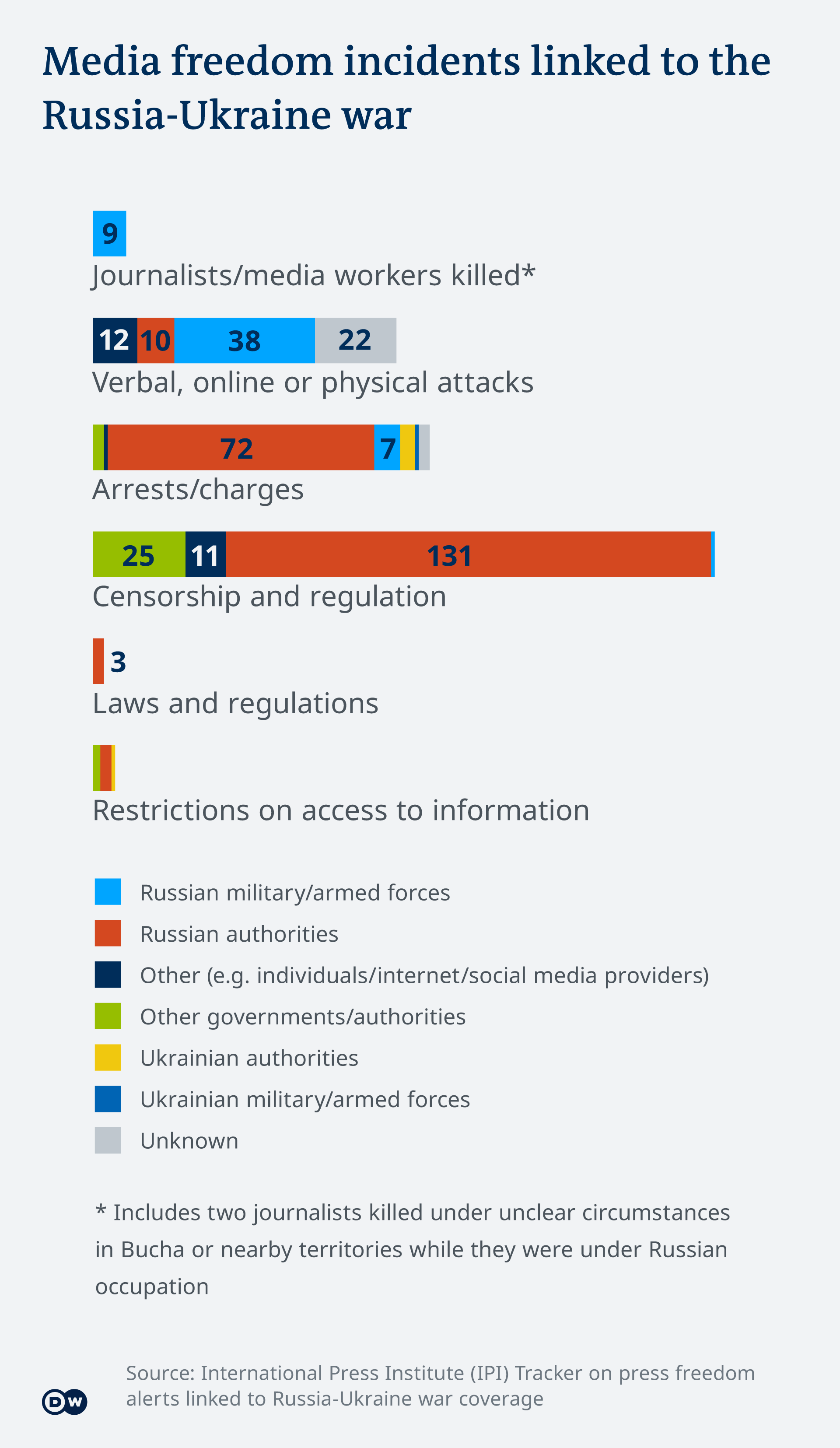
"The situation in Ukraine is extremely worrying right now," Ades-Mevel says. By Reporters Without Borders' count, six journalists of seven killed while working "were targeted deliberately by Russian forces — international, Ukrainian and Russian journalists covering the conflict."
On the dangerous situation for journalists in Ukraine, Griffen again emphasizes the need for accountability. "If some of these journalists were directly targeted, we need to start collecting the evidence for possible war crimes prosecutions."
He also points to Mexico, which has a high number of journalist killings, 11 this year already. He calls the case of Mexico "shocking" and a "bloodbath against journalists," explaining that many deaths are connected to reporting around drug cartels.
"It's an awful situation and it's just unbearable, actually, that the Mexican authorities are unable to get a grip on this."
WHAT CAN JOURNALISTS DO TO PROTECT THEMSELVES?
In light of all the violence targeting journalists, media workers should be well-briefed and prepared, particularly in conflict areas, believe both Griffen and Ades-Mevel.
Media organizations must be sure to adopt safety protocols, allocate enough resources to protect journalists, and ensure proper training of journalists, Griffen says.
"In the case of Ukraine, for example, it is very important that journalists are equipped with helmets or jackets," Ades-Mevel points out, and adds that Reporters Without Borders has provided some such equipment there.
Unfortunately, that did not help Abu Akleh, who, according to Al Jazeera, was wearing a press vest and a helmet when she was fatally shot.
"She was an icon, a famous journalist," says Ades-Mevel. "She is a symbol for lots of journalists in the world — and not only in the Middle East, but absolutely everywhere."
"The whole community of journalists is mourning."
Edited by: Stephanie Burnett
